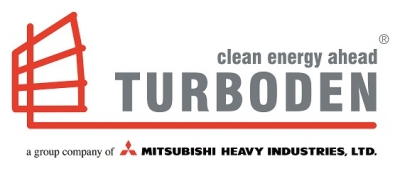 As VP Smart Market EMEA within OMNETRIC he is responsible for the solution architecture of meter data management, demand response and VPP solution in Europe, Middle East and Africa. He has 12 years of Utility experience of which he mostly worked in Meter Data Management and Smart Metering.
As VP Smart Market EMEA within OMNETRIC he is responsible for the solution architecture of meter data management, demand response and VPP solution in Europe, Middle East and Africa. He has 12 years of Utility experience of which he mostly worked in Meter Data Management and Smart Metering.
Prior to joining OMNETRIC in 2014, Pim was working as senior solution architect within Accenture Smart Grid Services for 5 years. Before that he worked for Itron and CGI.
1. What are you looking forward to explaining to the audience?
Clean energy has arrived in many forms, from PV to wind power, but it’s still hard for operators to integrate it reliably into the grid and manage it effectively. DERMS – Distributed Energy Resource Management Systems – are helping to solve this challenge, providing a single platform to manage load aggregation, storage and generation.
2. Why did you decide to do a webinar with Business Review Webinars?
The topic of DERMS and managing clean energy is one that is not limited to utilities. Indeed, companies, communities, universities and hospitals for example, are all thinking about how they can better manage their energy generation and use in the future. Business Review Webinars are a good platform for educating a broad audience effectively.
3. How did you get into the industry and what do you most enjoy about your role?
My start in the industry was implementing new legislation for metering during the deregulation of the Dutch utility market. I then ventured into the world of meter data management and smart metering as a solution architect. Over the last couple of years, I have focused on the potential of using meter data management platforms for other purposes, such as Demand Response and aggregating Distributed Energy Resources (DER) for virtual power plant purposes. In my current role at OMNETRIC Group, I am responsible for the Smart Market portfolio in EMEA. This provides me with the opportunity to work on the cutting edge of new developments on grid end-points, developing new propositions with my team of Solution Architects and Engineers for clients.
4. What are you hoping to achieve in the future in your personal and professional life?
I want to finish the Defi Wind in Gruissan in 2017. It’s the largest annual worldwide gathering of competing windsurfers with over a thousand amateurs and pros launching from the same start line.
5. Where is your favourite place in the world?
That is a tough one, but I will have to go with Sapa in Vietnam.

 The global oil and gas industry is reliant on the long term dependability of pipelines. Rigid pipelines are vital to the safe and efficient transportation of hydrocarbons and as such failures within these pipelines can have huge environmental, safety and reputational implications. As the global demand for energy increases so too does the consequences of any potential pipeline failure. In order to facilitate the repair or maintenance of pipelines, operators can often encounter difficulties in isolating sections of their pipeline if appropriate valves are defective or absent from the line.
The global oil and gas industry is reliant on the long term dependability of pipelines. Rigid pipelines are vital to the safe and efficient transportation of hydrocarbons and as such failures within these pipelines can have huge environmental, safety and reputational implications. As the global demand for energy increases so too does the consequences of any potential pipeline failure. In order to facilitate the repair or maintenance of pipelines, operators can often encounter difficulties in isolating sections of their pipeline if appropriate valves are defective or absent from the line. In addition, pipeline operators now require the peace of mind that, should a pipeline fail, their contingency plans and processes are fully established, qualified, and able to respond to any emergency scenario. Operators can reduce the out-of-service time of damaged pipelines by many months when they pre-invest in isolation technology which is maintained in a state-of-readiness, allowing a rapid emergency response.
In addition, pipeline operators now require the peace of mind that, should a pipeline fail, their contingency plans and processes are fully established, qualified, and able to respond to any emergency scenario. Operators can reduce the out-of-service time of damaged pipelines by many months when they pre-invest in isolation technology which is maintained in a state-of-readiness, allowing a rapid emergency response.
 Andrea Magalini,
Andrea Magalini, Since late ‘90s renewable energy has been living a boom that would have shaped the future of the power sector in Europe and in the rest of the world. Renewable sources, specifically bioenergy, solar, wind and geothermal energy have been on the verge of a boom that proved to be even almost uncontrolled in many countries. Renewable sources gained public awareness while few players and few countries started opening possibilities and granting incentives (or specific regulation) to boost the industrial footprint overall efficiency and reduce their overall CO2 emissions through the exploitation of waste heat streams.
Since late ‘90s renewable energy has been living a boom that would have shaped the future of the power sector in Europe and in the rest of the world. Renewable sources, specifically bioenergy, solar, wind and geothermal energy have been on the verge of a boom that proved to be even almost uncontrolled in many countries. Renewable sources gained public awareness while few players and few countries started opening possibilities and granting incentives (or specific regulation) to boost the industrial footprint overall efficiency and reduce their overall CO2 emissions through the exploitation of waste heat streams.